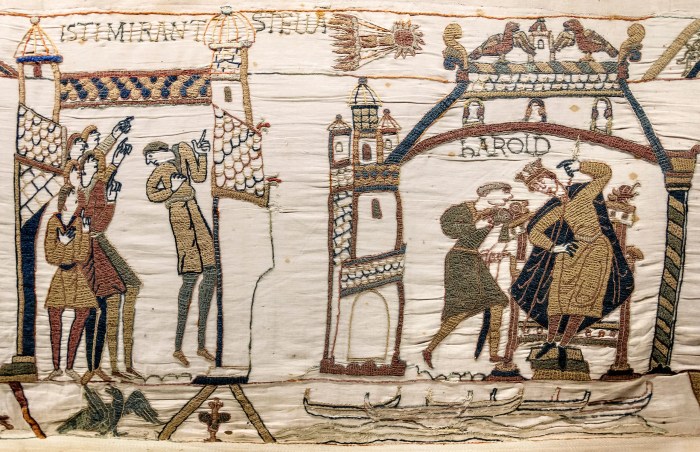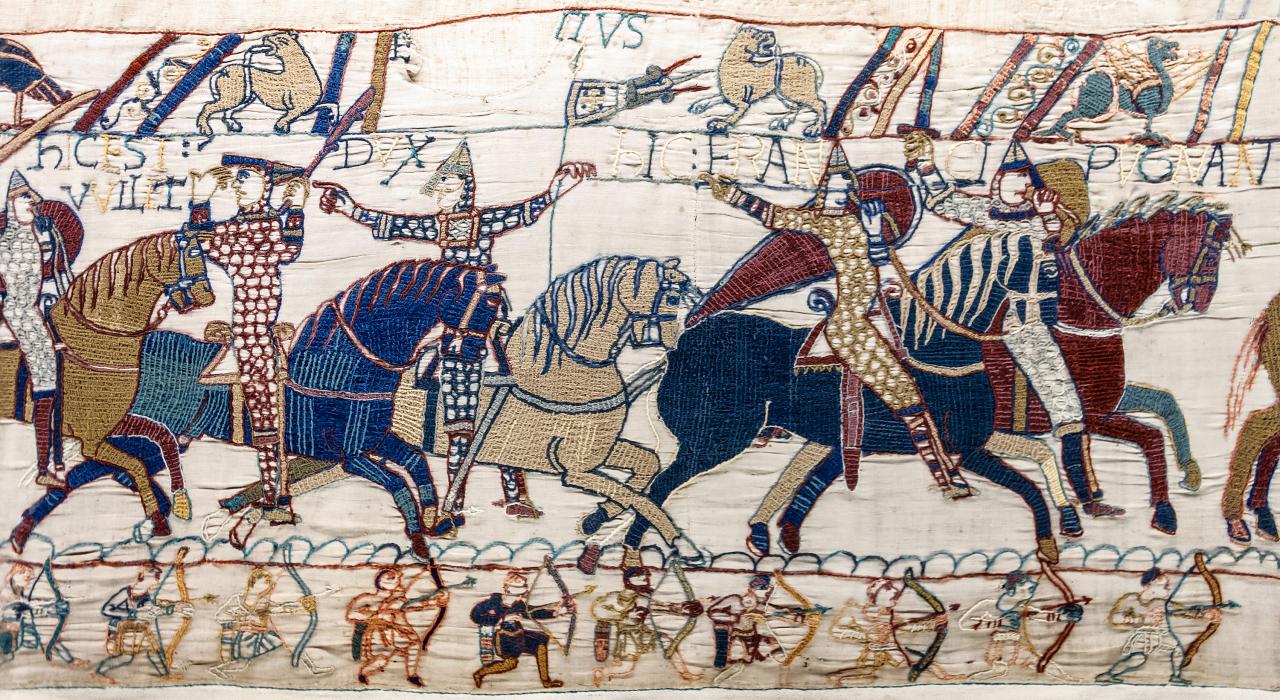The bayeux tapestry was embroidered by women. – The Bayeux Tapestry, an extraordinary work of art, stands as a testament to the exceptional skill and artistry of medieval women. This remarkable embroidery, with its intricate scenes and captivating narrative, offers a unique glimpse into the events surrounding the Norman Conquest and the lives of women during that era.
The tapestry, spanning over 230 feet in length, depicts the events leading up to and including the Battle of Hastings in 1066. Through its vivid imagery and detailed craftsmanship, it provides a valuable historical record and a fascinating insight into the artistic traditions of the Middle Ages.
Historical Context of the Bayeux Tapestry

The Bayeux Tapestry is a remarkable piece of medieval embroidery that depicts the events leading up to and including the Norman Conquest of England in 1066. Created in the 11th century, the tapestry is an invaluable historical document that provides insights into the political, military, and cultural aspects of the period.
Origins and Purpose, The bayeux tapestry was embroidered by women.
The tapestry was likely commissioned by Bishop Odo of Bayeux, William the Conqueror’s half-brother, to commemorate the Norman victory at the Battle of Hastings. It was intended as a propaganda tool to legitimize William’s claim to the English throne and to glorify the Norman Conquest.
Historical Significance
The Bayeux Tapestry is a unique and invaluable historical source that provides a detailed account of the events surrounding the Norman Conquest. It depicts key figures, battles, and events, offering a glimpse into the social, political, and military landscape of the period.
Timeline of Events
- 1064: Edward the Confessor, King of England, dies childless.
- 1066: William, Duke of Normandy, claims the English throne based on a promise made to him by Edward.
- 1066: Harold Godwinson, Earl of Wessex, is crowned King of England.
- 1066: William invades England and defeats Harold at the Battle of Hastings.
- 1066: William is crowned King of England.
Answers to Common Questions: The Bayeux Tapestry Was Embroidered By Women.
Was the Bayeux Tapestry actually embroidered by women?
While there is no definitive proof, scholarly consensus suggests that the Bayeux Tapestry was likely embroidered by a group of women, possibly nuns or skilled craftswomen, under the direction of a master embroiderer.
What techniques were used in the embroidery of the Bayeux Tapestry?
The tapestry was embroidered using a variety of stitches, including couching, stem stitch, and split stitch. The embroiderers employed a range of colors and materials, including wool, linen, and silk.
What is the significance of the Bayeux Tapestry?
The Bayeux Tapestry is a unique and valuable historical document that provides insights into the events surrounding the Norman Conquest and the lives of medieval women. It is also a remarkable example of medieval craftsmanship and artistic skill.

